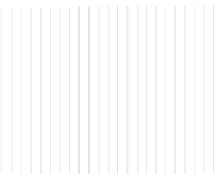Information Technology Reference
In-Depth Information
MULTIPLIER
ADDER
LOOP = 52 Clock Cycles
LOOP
A)
LOOP
LOOP
LOOP = 10 Clock Cycles
LOOP
LOOP
B)
ADDER
MULTIPLIER
Fig. 16.
Redesign of MAC to reduce the loop length. With this new design the loop
length is only 10 clock cycles, moreover it is independent from the bit number.
major sources of performance degradation in this technology, the shorter the
loop, the better the performance. With a better analysis of the circuit layout,
the MAC circuit can be modified as shown in Fig.
16
, so the original 52 clock
cycle long loop has become only 10 clock cycle long, without changing the sys-
tem algorithm. The delay is also independent from the MAC bit number, and
overall the area is smaller. Without interleaving the delay between one data and
the next is therefore of only 10 clock cycles.
Figure
17
shows a simulation comparison (without interleaving) of the origi-
nal architecture (Fig.
17
(A)) and the optimized one (Fig.
17
(B)). The execution
time, and therefore the throughput, is improved of 5 times. While this technique
shows good results, it can be only used as a complementary technique, because
it does not allow to completely eliminate the loop. Interleaving is still necessary,
however the number of operations required to reach maximum performance is
lower.
3.2 Signals Synchronization
While the loss of performance is probably the more relevant problem due to
the presence of loops, some important issues also arise for signals synchroniza-
tion. When more loops are present inside the circuit, they must be carefully
designed to achieve perfect signals synchronization. Another issue is related to
the necessity of adding a specific delay on a particular signal. This is a common
requirement in many circuits, where the algorithm mapping implies the necessity
of delaying some signals of a specific amount of clock cycles. In case of NML and
all the intrinsic pipelined technologies particular rules must be followed to add
delays on specific signals. Both problems and the related solutions are described
in the following.






































































































































































































































































































































































































































































































































































































































































































































































































































































































































































































































































































































































































Search WWH ::

Custom Search